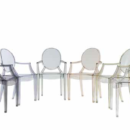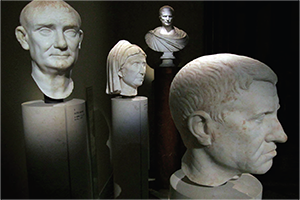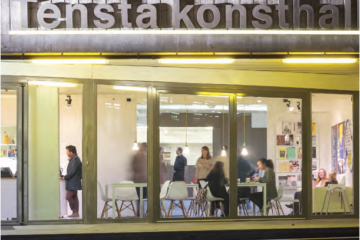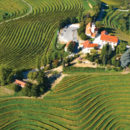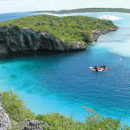
The dream from the saddle
The Italian banker Riccardo Tattoni has fulfilled an old wish: developing a thriving vineyard and a polo club in Tuscany at Villa a Sesta
To draw a line on Europe’s map from Geneva, one of the most important cities of Switzerland to the Italian region of Tuscany we would hardly use any pencil. The line is short and vigorous. It is the area where Riccardo Tattoni is oscillating between business and hobbies. Life is good when you have reached the point where you can enjoy it. When you succeeded. When you look back and see that things worked out for you, so today, at 58 you have the time and especially the resources to do what you like. When you can step into your vintage car, a 1961 Bentley S2 and drive it through your vineyard of which you are so proud. Or, you can go with your son, Walter to the polo matches. A very successful banker, Tattoni is considered one of the richest 300 people in Switzerland, with an estimated fortune recently assessed at 200 million Swiss francs. He has over 35 years of experience in the fascinating and tough field of finances where he started with a keen interest after graduating from Lausanne Business School where he got a Master in business management. Today he is known as a skillful independent asset manager, but also as an investment banker. Founder of the CIGP group he founded Société Bancaire Privée years ago, a Swiss private bank which was sold in 2007 to Banca Profilo SpA. Tattoni is also the director of various financial companies and investment funds.
The world knows Tattoni wearing the usual attire of bankers and businessmen. The suit, the tie, the shoes, all of the highest quality combined with a subtle slightly misleading smile. But all of these disappear when Riccardo goes to Tuscany at Villa a Sesta, the magic place where all of his passions are gathered. Those things in which he has not necessarily invested for profit, but to cultivate activities close to his soul: the production of wine and polo. This is the place where Tattoni gives up the formal outfit and chooses white trousers, a blue shirt, comfortable beige shoes and a jacket in the same shade. Dressed comfortably, he likes driving his vintage Bentley among the rows of grapes with the wind brushing his bleached temples. An iconic image of Tattoni was captured a few years ago by the Swiss photographer Didier Ruef: sitting on a wooden barrel produced in France by the specialized company Seguin Moreau, sleeves rolled up, smiling near classic Chianti bottles, one of the types of wine produced from his vineyards spread over 45 hectares.
A few years ago, on the grounds of the actual vineyard there was an abandoned quarry on the road to Castelnuovo, between San Gusmé and Brolio. In time the building was transformed into the clean, solid home of wine cellars. And not only that. At Villa a Sesta the olive oil is produced and processed from 60 hectares of olive trees. But this is not everything. There’s something interesting about Villa a Sesta. Something that requires a special investment: a polo club. Is not water polo, the Olympic discipline where Italy got remarkable results over years at the Olympic Games and European and World Championships. It is equestrian polo, an expensive, demanding sport, less publicized, but fascinating to watch and extremely dynamic. There, in the heart of Tuscany, between Arezzo and Siena, Riccardo Tattoni wanted to bring the heart of this combination of speed, skill and patience. The land cultivated with corn 15 years ago has been transformed and adapted for the polo course. The earth stood whole seasons without any roots making their way through its layers. It needs firm ground both for competitions and for training. 120 barns of the best quality were built, accommodating around 550 horses. Moreover, a small hotel with one Michelin star restaurant was built nearby. It was launched in 2002 with a series of competitions and in 2011 it hosted the playoff of the European edition of the World Cup. Before building the courts and barns in Villa a Sesta Tattoni was a permanent presence at polo clubs competitions organized in St. Tropez, Rome, Milan, G’staad and Geneva.
But what is Polo? A sport that is said to be mentioned by a Persian poet in 700 BC. Over time, it was developed more in Asia (Mongolia, Tibet, China, India and Japan). Later, there were found references to knights competing among themselves with a ball made of animal skin in a game called “pulu”. In 1859 India founded the first polo club, and ten years later, the sport had arrived in Europe, more exactly in England. Polo was part of the Olympic program at the 1908 edition hosted by London. In the late 1800s, the British established in Argentinean pampas started playing polo which became extremely popular in the vast South American country. Argentines have become the Olympic champions at this discipline in 1924 in Paris and 1936 in Berlin. From there on, the Polo has gained notoriety in Brazil, Chile, Mexico and the United States. In Italy, the first club appeared in Rome in the ’30s.
Polo is a demanding and expensive sport. A serious player needs an annual budget which can go up to 40,000 euros, as explained in a report Corriere della Sera. The equipment costs about 700 euros (300 for boots, trousers 60, 70 knee pads, 100 each club, 100 helmet, gloves 60). The biggest expense is represented by the horses. Each athlete has between two and four horses, valued at amounts that start from 2,000 euros and go up to 40,000. “Polo is becoming a sport in which more and more young people are interested”. said Riccardo Tattoni. “It creates emulation; it becomes a challenge for everybody”. In his white outfit with the team’s blue logo the banker smiles through the regular grid of his helmet. His beautiful horse shines with his feet carefully wrapped in tight strips of blue cloth and with his trembling tightly braided tail. The match is about to begin. At Villa a Sesta in the heart of Tuscany, where wealth, wine and polo form an unbeatable trio.
What are the rules?
The game involves horseback riding facing two teams of four riders. Balls today are made of plastic, replacing the wooden ones used until recently. The aim, as in most team sports is to score by putting the ball into the adversary goal, using wooden bats. The court has to be 274 on 146 meters. A game lasts about two hours, being split in rounds of seven minutes, called chukkas. Each break is of 4 minutes, and there is also a longer interval of 10 min in the middle of the game. Today, polo is played in 77 countries, but it is done at a professional level in 16 countries.


